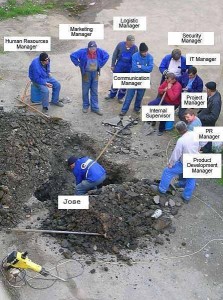[vc_row row_type=”row” use_row_as_full_screen_section=”no” type=”full_width” angled_section=”no” text_align=”left” background_image_as_pattern=”without_pattern” css_animation=””][vc_column][vc_column_text]
I want to find out how to pay double for the same job…. Said no one, ever.
Yet that’s what a lot of companies unknowingly do when paying for services such as web design and development for their business, by choosing large companies with large overheads.
To make things really simple, here’s what paying for a service looks like in its most basic form:
BUYER ⇒ PROVIDER
PAYMENT ⇔ SERVICE[/vc_column_text][vc_separator type=”transparent”][vc_separator type=”transparent”][vc_column_text]
You, on behalf of yourself or your company, pay an agreed amount of money in exchange for services rendered. The transaction brings value to both parties and both feel the exchange was worthwhile. Everyone goes home happy.
[/vc_column_text][vc_separator type=”transparent”][/vc_column][/vc_row][vc_row row_type=”row” use_row_as_full_screen_section=”no” type=”full_width” angled_section=”no” text_align=”left” background_image_as_pattern=”without_pattern” css_animation=””][vc_column width=”1/2″][vc_column_text]Of course, things start to get a little more complicated in the real world. Transactions between businesses are rarely quite that simple.
Now, here’s a worst case example of what this simple exchange CAN end up looking like in B2B transactions:[/vc_column_text][vc_separator type=”transparent” up=”20″ down=”20″][/vc_column][vc_column width=”1/2″][vc_column_text css=”.vc_custom_1439526571362{padding: 15px !important;background-color: #666666 !important;}”](COMPANY A) BUYER ⇒ (COMPANY B) ACCOUNT MANAGER ⇒ PROJECT MANAGER ⇒ TEAM LEADER ⇒ SERVICE PROVIDER
PAYMENT ⇒ OVERHEAD ⇒ OVERHEAD ⇒ OVERHEAD ⇒ SERVICE[/vc_column_text][/vc_column][/vc_row][vc_row row_type=”row” use_row_as_full_screen_section=”no” type=”full_width” angled_section=”no” text_align=”left” background_image_as_pattern=”without_pattern” css_animation=””][vc_column width=”1/2″][vc_separator type=”transparent” up=”20″ down=”20″][vc_single_image image=”18779″ img_size=”large” alignment=”center” img_link_large=”yes” qode_css_animation=””][/vc_column][vc_column width=”1/2″][vc_separator type=”transparent” up=”20″ down=”20″][vc_column_text]
When you deal with a large company with a large infrastructure, it’s quite likely that you’ll never get to speak to the people actually doing your work. In the way are the sales & accounts managers, the project managers and other bigwigs who not only increase the amount of time your project will take, but put your budget under strain as well. In reality, the true value of the service provided is only a fraction of the cost paid. The rest of the budget is siphoned off at each stage by the salaries, bonuses and perks of the extra employees in the service chain.
[/vc_column_text][/vc_column][/vc_row][vc_row row_type=”row” use_row_as_full_screen_section=”no” type=”full_width” angled_section=”no” text_align=”left” background_image_as_pattern=”without_pattern” css_animation=””][vc_column][vc_separator type=”transparent” up=”20″ down=”20″][vc_column_text]
How to pay double for the same job? Pay the people getting in the way
[/vc_column_text][vc_separator type=”transparent” up=”20″ down=”20″][vc_column_text]That’s account managers, salespeople, project managers, team leaders, accountants, human resources, CEOs, CFOs, CIOs… and so on.
Don’t get us wrong, some or all of these roles are certainly essential in the life of a New Zealand company, and we ourselves have a director and a team leader. The problem really begins when a company grows to an unwieldy size. Instead of a small, agile team where project leaders also contribute to the productive output of a company, the company ends up top heavy with very few employees genuinely ‘productive’. Be especially wary of companies that seem to have more ‘managers’ and ‘leaders’ than programmers and web designers! In a company with 3 of these ‘client-facing’ staff members to every 1 productive employee, you’ll know that 75% of your budget, at the very least, is not actually paying for the service you bought. You’ll end up paying a huge mark-up on these services so that the company can afford to keep their highly-paid senior staff happy.
If you think we’ve made up the example of a company with 3 or 4 salespeople to every 1 developer… trust us, we know of businesses like this and even worse![/vc_column_text][vc_separator type=”transparent” up=”20″ down=”20″][/vc_column][/vc_row][vc_row row_type=”row” use_row_as_full_screen_section=”no” type=”full_width” angled_section=”no” text_align=”left” background_image_as_pattern=”without_pattern” css_animation=””][vc_column][vc_column_text]
The small company difference
[/vc_column_text][vc_separator type=”transparent” up=”20″ down=”20″][vc_column_text] We firmly believe that small companies represent the future of business. Small companies have lower overheads and can often be more flexible and lower cost than large enterprises. It used to be that large companies represented security and stability for employees. Customers would also choose big business for their reputation and guarantee of high quality. These days, the market has changed completely. The Internet is largely responsible for this. Employees want more flexibility – to work part-time, work from home, even to become their own boss and form their own company. Everyone can get a website and start advertising their business cheaply. And start-up companies can often attract a large following and gain a reputation for themselves very quickly, thanks again to the Internet and platforms like Kickstarter.
We firmly believe that small companies represent the future of business. Small companies have lower overheads and can often be more flexible and lower cost than large enterprises. It used to be that large companies represented security and stability for employees. Customers would also choose big business for their reputation and guarantee of high quality. These days, the market has changed completely. The Internet is largely responsible for this. Employees want more flexibility – to work part-time, work from home, even to become their own boss and form their own company. Everyone can get a website and start advertising their business cheaply. And start-up companies can often attract a large following and gain a reputation for themselves very quickly, thanks again to the Internet and platforms like Kickstarter.
Large companies are more likely to be accused of stagnation, while small companies are seen as innovators who come up with new and better ways of providing products and services.
Although FutureLab is growing since arriving on the Auckland scene four years ago, we plan to stay at the SME size for the reasons outlined above. Our difference is providing high quality web development to the Auckland market at small business prices. In other words, keeping the quality superior thanks to years of corporate and agency experience, while keeping the costs down thanks to our way of running the company.[/vc_column_text][/vc_column][/vc_row][vc_row row_type=”row” use_row_as_full_screen_section=”no” type=”full_width” angled_section=”no” text_align=”left” background_image_as_pattern=”without_pattern” css_animation=””][vc_column][vc_separator type=”transparent” up=”20″ down=”20″][vc_column_text]
The Agile way at FutureLab
[/vc_column_text][vc_separator type=”transparent” up=”20″ down=”20″][vc_column_text]We use Agile project management to provide web design and development to our customers while avoiding unnecessary overheads.
Agile is a method of development that utilises small groups that work together to complete a project. Our group consists of 1 developer, 1 designer, and 1 content and project manager. Agile eliminates unnecessary people from the development process and puts decision-making into the hands of the group. Agile is fast becoming accepted as a better and more efficient way to run project managing and we are proud to be ahead of the curve in implementing Agile in our team.
In our company, nearly all of our employees are ‘productive’ – that means actually working directly on a project for our clients. Our director is an experienced programmer, and projects are managed by one of the team directly working on each project. In this way we can avoid the long service chain in the example above and offer agency-level quality at half the price.[/vc_column_text][vc_separator type=”transparent” up=”20″ down=”20″][vc_column_text]
Big brands like flexibility too
[/vc_column_text][vc_separator type=”transparent” up=”20″ down=”20″][vc_column_text]Recently, we’ve had some very large, well-known brands moving away from using large advertising agencies and coming directly to us. We can provide web development to large brands with a much faster turnaround time than a traditional ad agency can provide. There’s less back and forth about signing off on budgets, meeting for weekly coffees or filtering every decision down through the service chain. The majority of the hours our clients pay for are spent on completing the work, not on round-table discussions and phone calls.
You can’t eliminate overheads completely, but you can definitely make sure these costs are minimised. When choosing a web development company to partner with, find out how they work, who they employ, and whether the company is full of developers, or just full of salespeople.[/vc_column_text][vc_separator type=”transparent” up=”20″ down=”20″][vc_column_text]
If you’re interested in finding out more about FutureLab and how we can work alongside your team on your next web development project, why not give us a call on 09 280 3470 or send us a quick email. You might find our way of doing business refreshing.
[/vc_column_text][/vc_column][/vc_row]